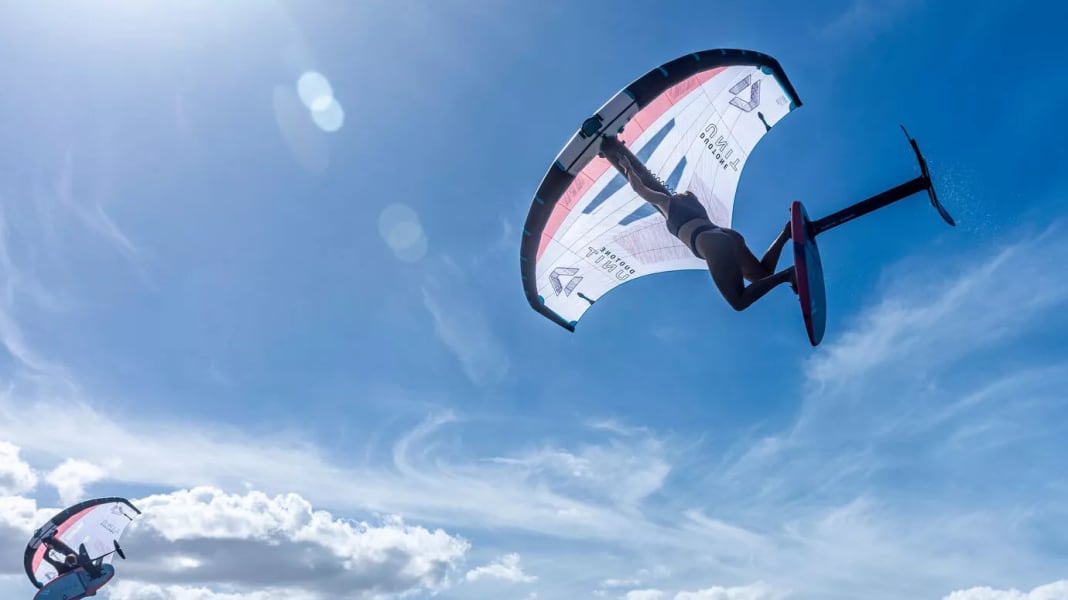
The unit is now in its third generation. Sizes between 2.0 and 6.5 square metres are available in three colour codes. Alternatively, a construction called "D/Lab" made of stiff and very light Aluula material is also available, although this is almost twice as expensive.
On land:
Designer Ken Winner has made some changes to the latest version of the declared all-round wing. The "V" of the front tube has been reworked to make the wing drift more neutrally. In addition, a different cloth material has been used, which should be stiffer and less stretchy. As a result, the wing weighs around 150 grams more. The profile and outline have been retained, which is traditionally somewhat more elongated than, for example, the stable brother Slick SLS ( HERE there's a test).
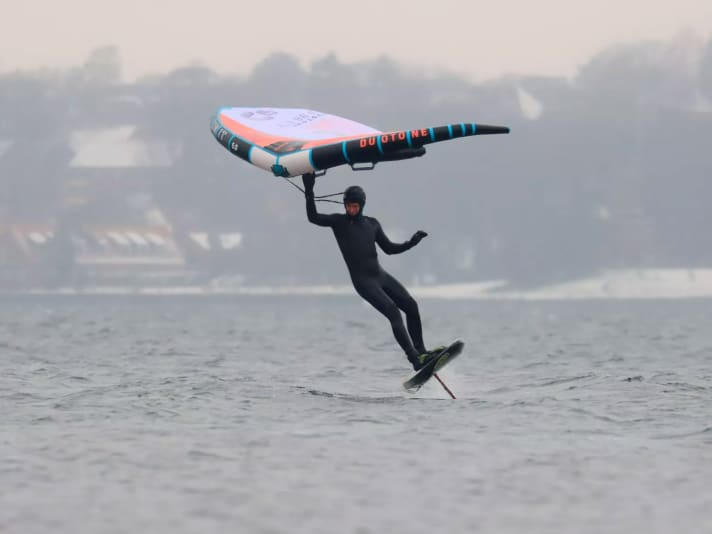
The position of the windows on the Duotone Unit has also been revised. Even though these are very narrow, they now offer a slightly better view to leeward due to the changed arrangement. The rather indirect and spartan front handle on the previous model has been changed and is now much stiffer and more direct. However, Duotone has retained the grip system. The grip position can be selected very variably on two thin mini booms. The only thing you have to do without is a grip position at the pressure point, which means you can't fly the wing one-handed. Only the bag is included in the scope of delivery, no leash. The Wing is ventilated via the in-house Duotone valve system. The wing can be deflated very quickly, also thanks to additional exhaust valves on the centre strut and wingtip.
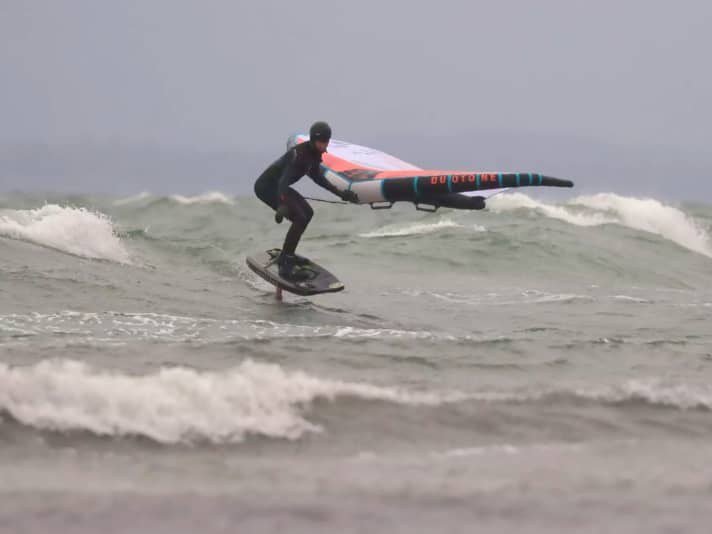
We also present this wing to you again in a video. Take a look and subscribe to our YouTube channel .
On the water:
We tested the new Duotone Unit against wings from other brands, but also directly against the previous model. In terms of planing, the predecessor was already one of the best performing wings, and this has not changed with the new model. Overall, the wing seems a little stiffer, but is still easy to pump. In the lower wind range, the inflation pressure can also be reduced by 0.5 to 1.0 psi, in which case the unit inflates even more efficiently. In the air, the Wing is very balanced in the hand, in our opinion it now even provides slightly more power in the back hand and a little more flight stability. This is an advantage for freeriding, cruising and accelerating. The grip position can be selected with millimetre precision, which is why you can fly with the same tension distribution and in an extremely relaxed manner.
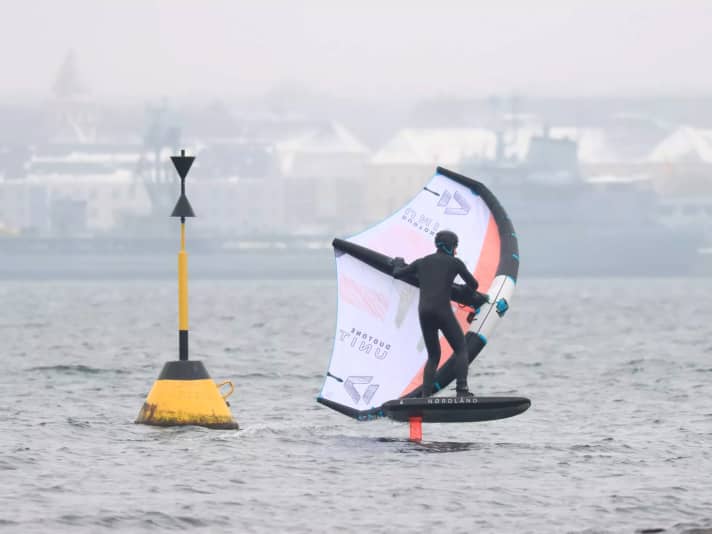
In manoeuvres, the Unit has always been at the top level. Fortunately, the new model has not lost this strength either, even though its nominally somewhat lighter predecessor is at least on a par here. The Duotone Unit can be rotated and steered through all foil manoeuvres very directly and playfully. The Unit also has particular strengths when drifting. If you position yourself on swell or surf waves and let the wing fly behind you, it balances itself perfectly and has no annoying life of its own. Thanks to the stiffer front handle, you now also have more control over the unit when drifting. And for freestyling? Here too, the wing shows no weaknesses, it rotates quickly, is easy to hold and can be controlled precisely.
Duotone Unit - the bottom line:
Like its predecessor, the new Unit is the perfect all-rounder for freeriding, tricks and wave riding. Some minor weaknesses of the previous model (e.g. the front handle) have been rectified, but to be honest, the previous model ( HERE there's a test) is still absolutely competitive. In a brand-internal comparison with the Slick SLS, we would attest that the Unit has a significantly larger target group. Only those who focus fully on freestyle tricks will get a little more potential from the Slick SLS, but will also have to live with poorer freeride suitability and less neutrality when drifting in waves.
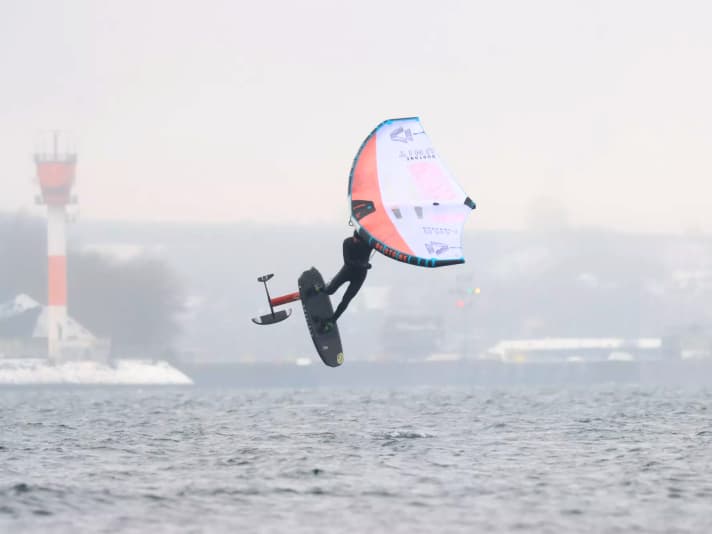
Range of use, power & neutrality
No handle position in the centre
Without leash

